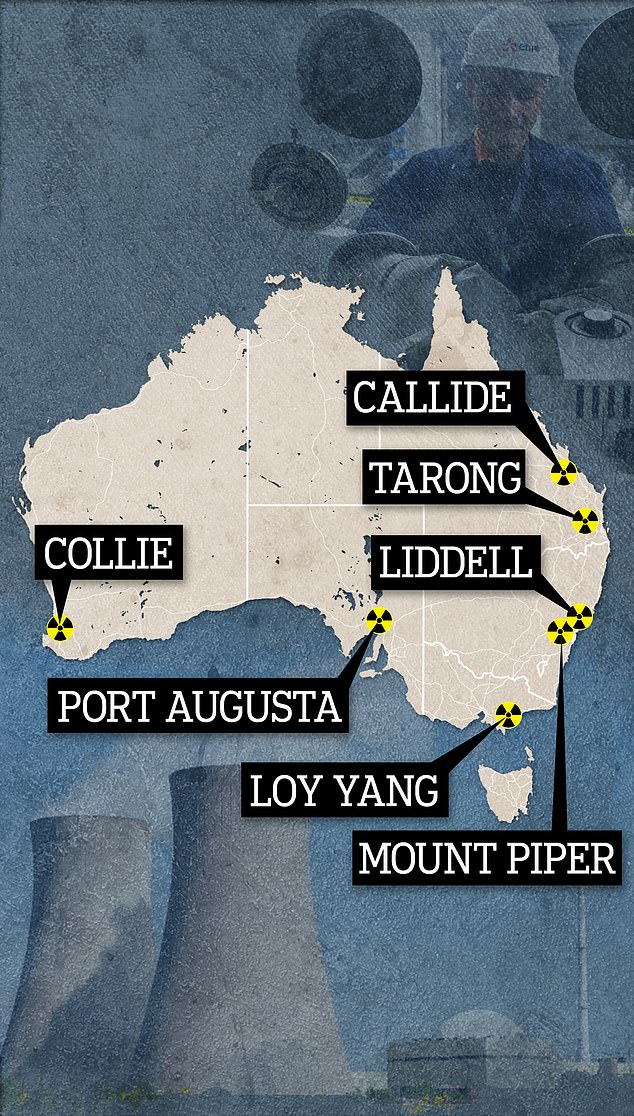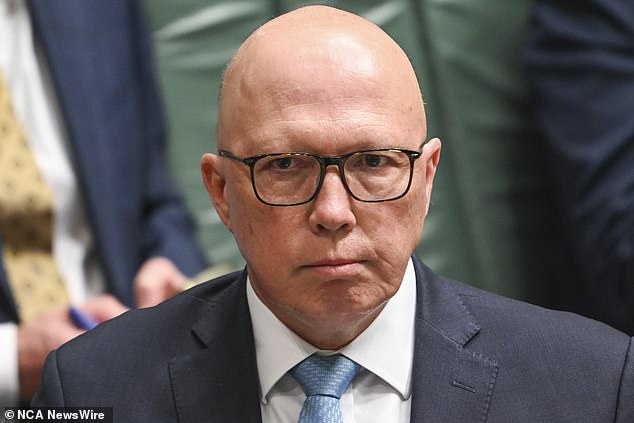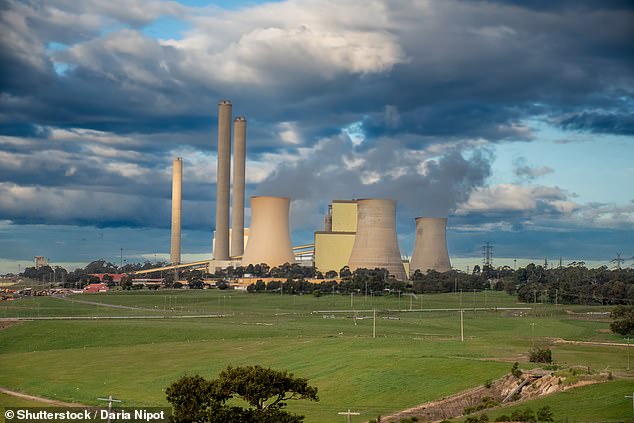The insane amount it could cost to turn Australia nuclear – as new detail in Peter Dutton’s bold plan is revealed
Labor frontbencher Tanya Plibersek has added her voice to the tirade of criticism of the opposition’s push for nuclear energy, labeling the proposal as ‘completely irrational’ and ‘designed to distract’.
In a speech on Sunday, the Environment and Water Minister criticized the coalition for its refusal to detail the estimated costs of adding nuclear power to the national electricity market in the biggest energy policy review in decades.
“He’s saying to Australians, ‘I don’t trust you. I don’t trust you with the costs we’ve incurred,’ if he has the costs,’ Ms Plibersek told Sky News.
‘Every international analysis shows that sustainable energy is cheaper, while nuclear energy is the most extensive.
“What will it do to pay its energy bills when the government recoups the very expensive costs of building and operating those nuclear reactors?”
According to an analysis by the Smart Energy Council based on data from the latest GenCost report, Labour’s non-nuclear energy plan will cost an estimated $117 billion to 2050, while the Coalition’s pledge would cost more than $600 billion.
Opposition energy spokesman Ted O’Brien has noted an evolution in the Coalition’s nuclear energy policy, showing that each of the seven sites could house multiple reactors.
Labor frontbencher Tanya Plibersek has added her voice to the tirade of criticism of the opposition’s push for nuclear energy, labeling the proposal as ‘completely irrational’ and ‘designed to distract’.
But in a major concession, Mr O’Brien said on Sunday that the Coalition would not go to the election to announce the estimated generation capacity of its nuclear power plan, leaving that decision to an independent body until after the election.
“One of the lessons we’ve learned from overseas is that to get prices down you need multi-unit sites,” Mr O’Brien told the ABC’s Insiders programme.
‘Let’s say the small modular reactors… When you talk about a nuclear power plant, these are modularized compartments. You can add another 300, another 300.
“You’re talking about multi-unit installations.”
An independent nuclear energy coordinating authority would make recommendations on the number and type of reactors per site, Mr O’Brien said, which would then determine the final generation capacity.
“The independent body would look at each factory and come up with a recommendation on what kind of technology should be used,” he said.
‘From there, the exact capacity would be determined based on that technology.
‘Only from there you arrive at a certain number of gigawatts.’
Last week the Coalition unveiled plans to build seven nuclear power stations by 2050, with the first reactor due to be operational in just over a decade, a move aimed at delivering cheaper, emission-free and reliable energy supplies.
The large and small modular generators would be Commonwealth owned, similar to the arrangements for the Snowy Hydro 2.0 programme, which requires a funding commitment of billions of dollars from taxpayers.
The coalition has proposed locating the reactors in Queensland, NSW, Victoria, South Australia and Western Australia on the sites of former coal-fired power stations, adding no more than 10 GW to the electricity grid, meaning renewables would provide the vast majority of energy production will continue to matter. to blend.
John Grimes, chief executive of the Smart Energy Council, said Mr Dutton’s nuclear proposal would provide “at best” 3.7 percent of the energy needed at the same cost as the government’s current strategy.

Tarong and Callide in Queensland, Liddell and Mount Piper in NSW, Port Augusta in South Australia, Loy Yang in Victoria and Muja in Western Australia are marked as the locations for the stations
“In reality, the current cost overruns happening in Britain could mean a bill of $600 billion for Australian taxpayers, while providing a small fraction of the energy actually needed,” he said.
Nuclear power has no place in a country with cheap, reliable energy powered by solar and wind and backed by renewable energy storage, Grimes said.
“The most optimistic assessment of Peter Dutton’s nuclear proposal indicates that it is a pale shadow of the reliable renewable energy plan outlined and costed by Australia’s energy market operator,” he said.
The council has called on the opposition to release its analysis of the costs and generation capacity of the seven proposed nuclear reactor sites.
“They need to explain how their predictions contradict the experts at the CSIRO and AEMO,” Mr Grimes said.
“It is extraordinary that the details are being kept from the Australian public.”
A separate analysis from CSIRO puts the cost of building a large-scale nuclear reactor at $8.6 billion, bringing the total cost to around $60 billion. However, core projects are often subject to major delays and skyrocketing cost overruns.

John Grimes, CEO of the Smart Energy Council, said Dutton’s nuclear proposal would “at best” deliver 3.7 percent of the energy needed at the same cost as the government’s current strategy.

A separate analysis released by CSIRO estimates the cost of building a large-scale nuclear reactor at $8.6 billion, bringing the total cost to around $60 billion, but nuclear projects are often subject to significant delays and skyrocketing cost overruns (stock image)
When asked why Australia had shunned nuclear power when many other advanced economies had adopted the technology, Ms Plibersek pointed to Australia’s relative advantage in renewable energy generation.
“We have the space, we have the resources, we have the crucial minerals we need, battery production, we are investing in green hydrogen,” Ms Plibersek said.
“We could be a renewable energy superpower and instead Peter Dutton wants to pump the brakes, rather than leading the world in renewable energy investment.
‘He wants to accelerate nuclear energy and put us on the slow track when it comes to renewable energy sources. It’s just angry.’
